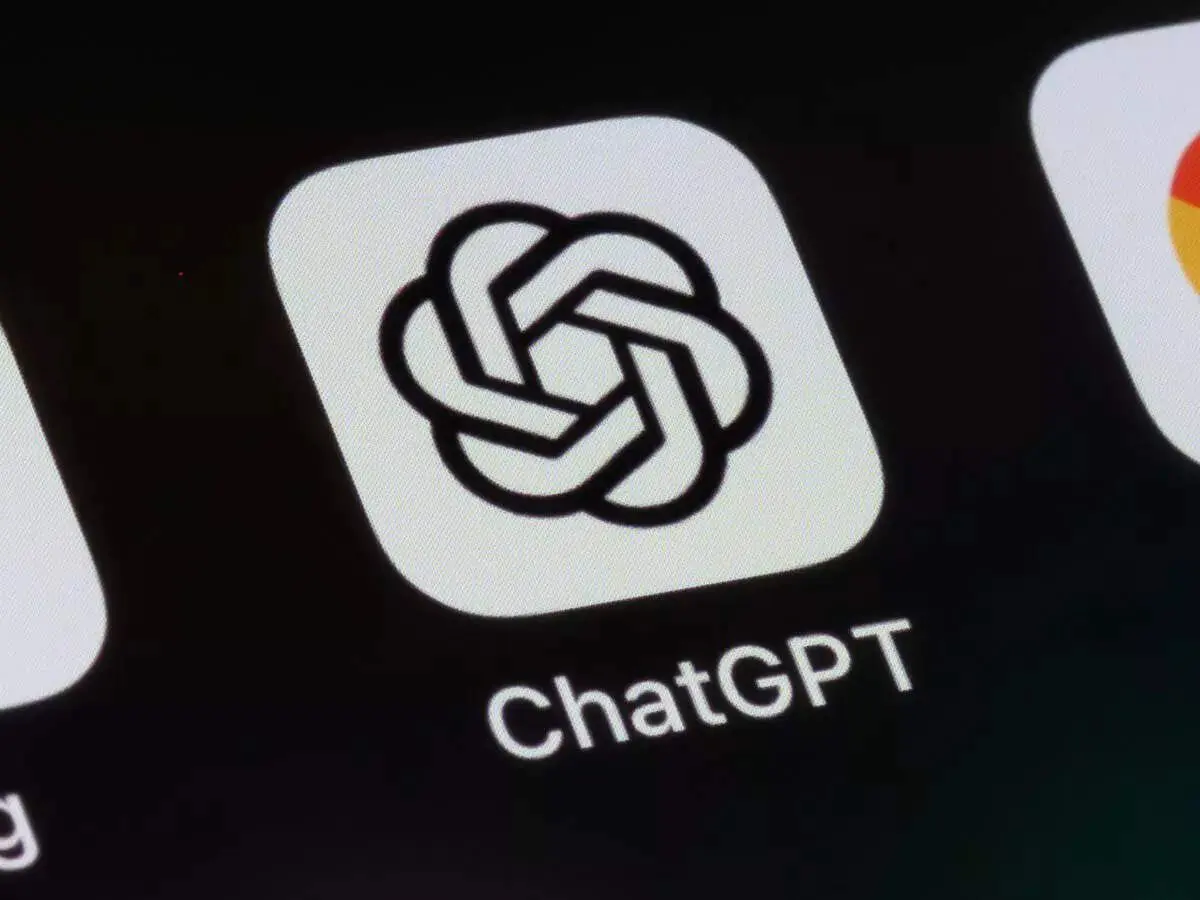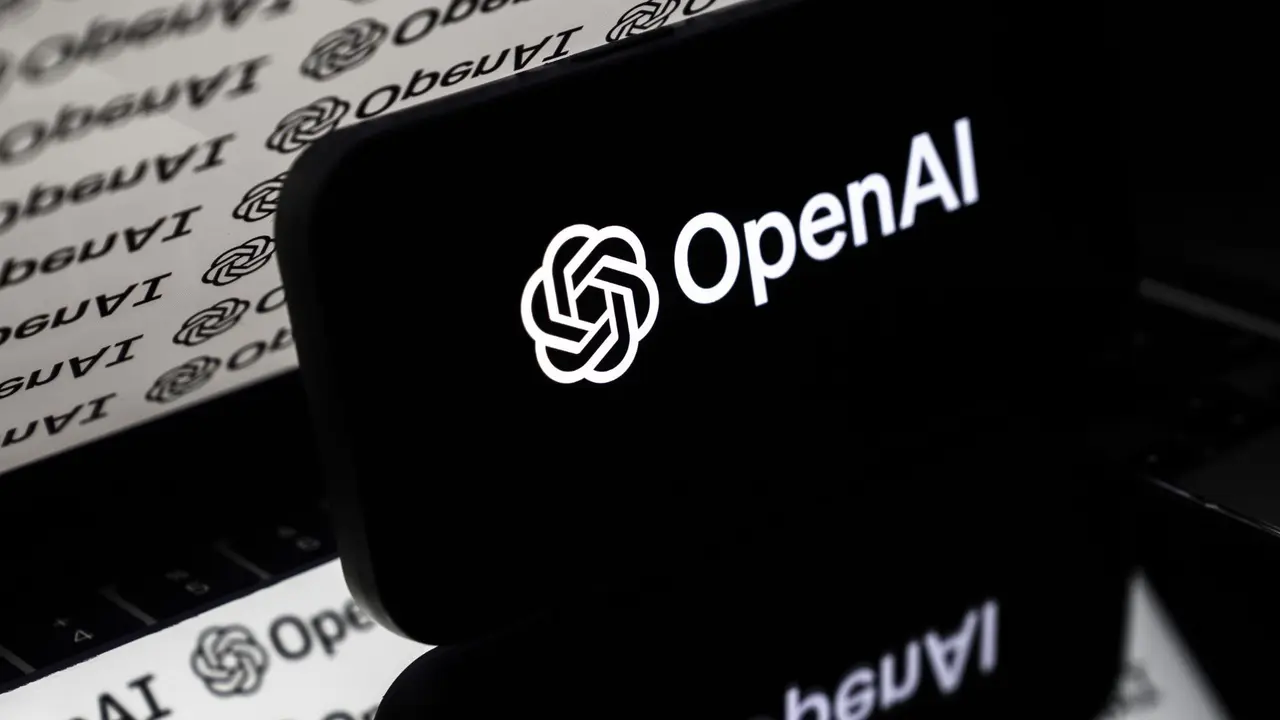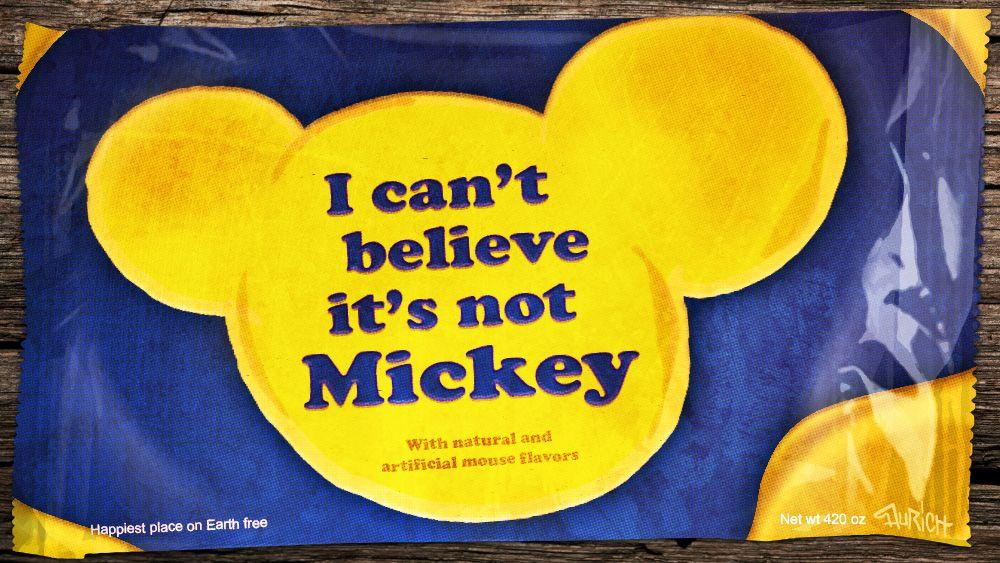OpenAI Reveals 75% of Revenue Comes from Consumer Subscriptions, Highlighting Rapid Growth
6 Sources
6 Sources
[1]
OpenAI CFO: Paid ChatGPT Subscriptions Make Up Most of Our Business
Samantha Kelly is a freelance writer with a focus on consumer technology, AI, social media, Big Tech, emerging trends and how they impact our everyday lives. Her work has been featured on CNN, NBC, NPR, the BBC, Mashable and more. An OpenAI executive said Monday that the majority of the company's revenue comes from consumer subscriptions, primarily through its paid ChatGPT services. CFO Sarah Friar told Bloomberg TV that about 75% of the company's overall business comes from consumer subscriptions. Her remarks come as OpenAI continues to expand its enterprise business with services including ChatGPT Enterprise and ChatGPT Team. Still, its consumer base remains the main stream of revenue by offering users extra incentives. For example, its entry-level ChatGPT Plus plan, which starts at $20 per month, includes access to various AI models, along with DALL-E image generation, higher usage limits and early features. "We have been wowed at just the pace of growth, particularly on the consumer side," Friar said in the interview. "Even our enterprise businesses, they are young, but they are already doing an incredible amount of annualized revenue. We're really excited by the potential there." She added that the company has about 250 million weekly active users and is converting free customers into paying ones at a rate of 5% to 6%. In September, OpenAI revealed it had reached a milestone of 1 million paid users for enterprise versions of ChatGPT. However, OpenAI continues to face high costs due to the development and operation of advanced AI systems. It recently secured $6.6 billion in funding and a $4 billion line of credit to support its infrastructure plans, which include building large data centers to power its data-hungry AI models. At the same time, OpenAI continues to dominate the competitive generative AI landscape. Visits more than doubled in September 2024 to a record 3.1 billion visits, according to researcher Similarweb. That makes ChatGPT the No. 11 website by worldwide traffic - yet still a far cry from Google.com, with 82 billion visits, or YouTube.com, with 28 billion. In the chatbot market, however, ChatGPT's closest US competitor is Microsoft's Bing.com, which had under 2 billion visits in September. Google's Gemini was the third most-visited chatbot, with 274.7 million visits, according to Similarweb.
[2]
OpenAI Reveals 75% Of Its Revenue Comes From One Service - Microsoft (NASDAQ:MSFT)
OpenAI CFO Sarah Friar revealed that a monumental 75% of the AI startup's revenue comes from consumer subscriptions to just one service - ChatGPT. What Happened: In an interview with Bloomberg TV, Friar said that the majority of ChatGPT-maker's revenue is derived from consumer subscriptions. OpenAI paid plan for consumers, ChatGPT Plus starts at $20 per month. "We have been wowed at just the pace of growth, particularly on the consumer side," Friar stated. Moreover, she said that OpenAI's enterprise businesses, although nascent, already generate a significant amount of annualized revenue. See Also: OpenAI Senior Advisor Joins Exodus, Warns 'Neither OpenAI Nor Any Other Frontier Lab Is Ready' For AGI Previously, it was reported that Microsoft Corp.-backed MSFT OpenAI has plans to more than double the price of ChatGPT over the next five years. Subscribe to the Benzinga Tech Trends newsletter to get all the latest tech developments delivered to your inbox. Why It Matters: The company announced in September that it had reached 1 million paid users for corporate versions of ChatGPT including ChatGPT Team, ChatGPT Enterprise, and ChatGPT Edu. Earlier this month, OpenAI closed a $6.6 billion fundraising round and secured a $4 billion revolving line of credit from global banks. In February 2024, it was reported that OpenAI's revenues soared beyond $2 billion annually, placing it among the fastest-growing technology companies ever. Laster, OpenAI also acquired Rockset, a real-time analytics database company, to improve its data indexing and querying capabilities. Check out more of Benzinga's Consumer Tech coverage by following this link. Read Next: AI Demand Fuels Record Profits, Chip Controversies, And Tech Giants Redefine AI Landscape: This Week In The World Of Artificial Intelligence Photo courtesy: Shutterstock Market News and Data brought to you by Benzinga APIs
[3]
OpenAI CFO Says 75% of Its Revenue Comes From Paying Consumers
OpenAI generates the vast majority of its revenue from consumers who pay for its products, Chief Financial Officer Sarah Friar said, even as the artificial intelligence startup competes in a crowded market to sign up more corporate customers. In an interview with Bloomberg TV on Monday, Friar said that roughly 75% of OpenAI's business comes from consumer subscriptions. The company's paid consumer plan for its chatbot ChatGPT currently starts at $20 per month.
[4]
OpenAI plans to offer its 250 million ChaptGPT users even more services
ChatGPT creator OpenAI says the AI tool has 250 million "active weekly users" and most of its revenue comes from consumers. "We have been wowed at just the pace of growth, particularly on the consumer side," said OpenAI's chief financial officer, Sarah Friar, as she disclosed the number of subscribers in an interview with Bloomberg TV host Ed Ludlow over the weekend, on the sidelines of the Money 20/20 conference in Las Vegas. Also: OpenAI expands o1 model availability - here's who gets access and how much While not all active users are paying users, the company "is converting free users to the paid product at a rate of 5% to 6%," Friar told Ludlow. She did not disclose how many active users are paying subscribers. By comparison, Netflix has 282.7 million "global streaming paid memberships" as of its most recent financial quarter. Friar told Ludlow that the AI startup makes three-quarters of its revenue from consumer subscriptions to its offerings rather than from enterprises. "We have been wowed at the pace of growth," said Friar. Friar also emphasized the corporate use of its software. Last month, the company said it has one million paying users for ChatGPT's enterprise and team versions. Also: Take Google's new AI course, write better prompts "Banks, financial institutions, FinTechs -- people are using it today in their business," said Friar. "I can't think of a wealth management client today that is not coming to us saying, 'What do we need to do, how can we get started?'" Friar cited investment bank Morgan Stanley as a customer using OpenAI's large language models (LLMs) in its financial advisor services "to create better financial advice and outcomes for customers." The largest vertical markets for the products include education, healthcare, and financial services. Friar said pricing levels are being evaluated by OpenAI. The recent "o1" version of the GPT LLM, said Friar, can do the work that a legal firm would pay $1,000 to $2,000 monthly for a human paralegal to carry out. The program costs a user $60 per hour. Also: What are o1 and o1-mini? OpenAI's mystery AI models are finally here "There's a lot of value that is in the product today," she said, "but we are just trying to make sure people can get started, can see the outcomes, and over time we believe that value-to-price will come into alignment." Friar said the company is "open to alternate business models." She suggested those alternatives could include a "pivot away from just pure subscription models to models that include ads." Also: How Claude's new AI data analysis tool compares to ChatGPT's version (hint: it doesn't) She cited the example of "a ChatGPT prompt for high-heeled shoes [...] I want five stores I can buy from now." In other instances, she said ads would not fit the context of a user's activity. Friar said she expects computing power -- not just from Microsoft, but from other parties -- to "maximize the compute for consumers." Microsoft and OpenAI have been partners for five years, with OpenAI receiving computing power in Microsoft's data centers and Microsoft receiving intellectual property in return. Ludlow asked Friar about the prospects for artificial general intelligence (AGI), software that could meet or exceed human intelligence. Also: 6 ways to write better ChatGPT prompts - and get the results you want faster "I think we have the plan in place. I think if Sam were sitting on this seat, he would say that AGI is closer than most think," she said, referring to CEO Sam Altman. "I would agree based on what I'm seeing," said Friar, who based her assessment on what she has seen internally by combining o1 with GPT models. "You have in your pocket human intelligence that is PhD level."
[5]
Consumer Subscriptions Account for 75% of OpenAI's Revenue | PYMNTS.com
At the same time, OpenAI is working to gain more corporate customers, according to the report. Friar said the company is "really excited by the potential there," per the report. More than half of the business products' paying users are outside the United States. The company nearly doubled its valuation to $157 billion after raising $6.6 billion in new funding in early October. The company was previously valued at $86 billion when some employees sold their shares early in the year. It was reported Sept. 27 that OpenAI expects its yearly sales to total $3.7 billion in 2024 and $11.6 billion in 2025. However, the company expects to lose about $5 billion this year after paying for operational costs, salaries and overhead. OpenAI recently introduced software called Swarm that unleashes teams of AI agents to tackle complex tasks and allows specialized AI helpers to hand off tasks to each other. There's a growing interest in AI agents for tasks ranging from automating customer service interactions to managing complex supply chains and executing financial transactions without human oversight. On Oct. 8, OpenAI and Hearst formed a content partnership that will see Hearst's newspaper and domestic magazine content integrated into OpenAI's generative AI products, including ChatGPT, and made available to ChatGPT's users. In September, OpenAI began rolling out its Advanced Voice to all Plus and Team users in the ChatGPT app. In the countries in which this voice feature is available, users can now choose from nine "lifelike output voices" for ChatGPT, with different tones and characters like "easygoing and versatile" and "animated and earnest."
[6]
OpenAI Say 75% of Revenue Comes From Consumers
Some 75% of OpenAI's revenue comes from consumers paying for its AI-powered chatbot and other products, a company spokesperson said on Monday. That means that the vast majority of the $4 billion the company was recently on track to generate this year will come from consumers, rather than businesses paying for its chatbot or developers accessing its conversational AI through an application
Share
Share
Copy Link
OpenAI's CFO Sarah Friar discloses that 75% of the company's revenue is generated from consumer subscriptions, primarily through ChatGPT. The AI startup boasts 250 million weekly active users and is experiencing significant growth in both consumer and enterprise sectors.

OpenAI's Revenue Dominated by Consumer Subscriptions
OpenAI, the company behind the popular AI chatbot ChatGPT, has revealed that a significant portion of its revenue comes from consumer subscriptions. Chief Financial Officer Sarah Friar disclosed in a Bloomberg TV interview that approximately 75% of the company's business is generated from consumer subscriptions, primarily through its paid ChatGPT services
1
.Impressive User Base and Growth
The AI startup boasts an impressive user base of about 250 million weekly active users
4
. Friar noted that the company is successfully converting free users to paid subscribers at a rate of 5% to 6%1
. This conversion rate has contributed to the rapid growth of OpenAI's consumer side, which has "wowed" the company's executives2
.Enterprise Growth and Expansion
While consumer subscriptions dominate OpenAI's revenue, the company is also making strides in the enterprise sector. In September, OpenAI announced that it had reached 1 million paid users for its enterprise versions of ChatGPT, including ChatGPT Enterprise and ChatGPT Team
1
. Friar expressed excitement about the potential in this area, noting that even though these enterprise businesses are young, they are already generating significant annualized revenue3
.Pricing and Value Proposition
OpenAI's entry-level ChatGPT Plus plan starts at $20 per month, offering users access to various AI models, DALL-E image generation, higher usage limits, and early features
1
. Friar highlighted the value proposition of their offerings, citing an example where their "o1" version of the GPT language model can perform tasks that a legal firm might pay $1,000 to $2,000 monthly for a human paralegal to complete, while OpenAI's program costs only $60 per hour4
.Related Stories
Future Plans and Potential Business Models
OpenAI is considering alternative business models to further monetize its services. Friar mentioned the possibility of pivoting away from pure subscription models to include ad-supported options in certain contexts
4
. The company is also exploring partnerships and integrations, such as its recent content partnership with Hearst to incorporate newspaper and magazine content into its AI products5
.Financial Outlook and Challenges
Despite its impressive revenue growth, OpenAI faces significant costs associated with developing and operating advanced AI systems. The company recently secured $6.6 billion in funding and a $4 billion line of credit to support its infrastructure plans, including the construction of large data centers to power its data-intensive AI models
1
. OpenAI expects its yearly sales to reach $3.7 billion in 2024 and $11.6 billion in 2025, although it anticipates a loss of about $5 billion this year due to operational costs, salaries, and overhead5
.References
Summarized by
Navi
Related Stories
OpenAI's Revenue Surge: ChatGPT Maker Projects Triple Growth Amid Fierce Competition
27 Mar 2025•Business and Economy

OpenAI's ChatGPT Reaches 1 Million Paid Business Users Milestone
06 Sept 2024

OpenAI Targets 220 Million Paid ChatGPT Subscribers by 2030 Amid Revenue Diversification Push
26 Nov 2025•Business and Economy

Recent Highlights
1
AI Chatbots Sway Voters More Effectively Than Traditional Political Ads, New Studies Reveal
Science and Research

2
Trump signs executive order to override state AI laws despite bipartisan pushback
Policy and Regulation

3
OpenAI warns upcoming AI models will likely pose high cybersecurity risk with zero-day exploits
Technology





